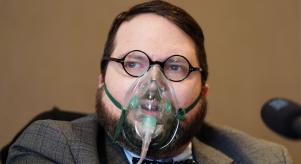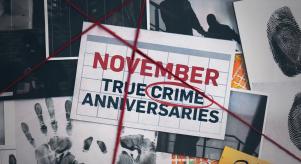


Anna Motz: Forensic psychologist reveals how some teens become killers
Laura Whitmore on Britain's Killer TeensAnna Motz is a consultant clinical and forensic psychologist and psychotherapist in a women's prison, and also works independently as a psychotherapist, specialising in self-harm, violence and childhood trauma. She has worked with male and female adults and teenagers who commit serious crimes for the past 34 years in prisons, mental health hospitals and secure units and the community.
Ahead of the release of Laura Whitmore on Britain’s Killer Teens on Monday, 8th September, which Anna features in as an expert contributor, Crime+Investigation spoke to her to find out more about the psychology behind why some teenagers turn to murder.
What psychological traits do you often see in teens who commit murder? Anything surprising?
The main traits are impulsivity, risk taking, antisocial and emotionally unstable traits.
These adolescents generally have a history of serious trauma and neglect in their early life, resulting in profound psychological problems, sometimes combined with neurological impairments. They have often had violent histories, in the worst cases involving cruelty to animals, and difficulties in relating to other children or peers. They have real difficulty in mentalising - i.e. linking their thoughts and feelings and being able to process and control their feelings. They find it hard to empathise with others and have often been scapegoated themselves within their families. They can easily be triggered if they believe they are under threat again and violently react against someone who reminds them of a predator from the past. They are often ‘on hyperalert’ and lose control easily.
These trauma responses can lead to impulsive murder, unplanned and made much more likely if there are drugs and alcohol involved. The other thing I noticed is that the teens are generally much more likely to murder if there are other people involved, like a partner, friends or older adults. I have not worked with a teenage murderer who acted alone.
What surprises me always is how child-like and fragile they can appear, and how their violence is just one part of their personality. This is especially striking when the murderer is an adolescent girl. It can be hard to reconcile that the person sitting in front of me, looking scared and anxious, had this other side of her.
Is there a line between teen impulse and calculated evil – or is that line more blurred than we think?
I don’t believe in calculated evil but think generally brutality begets brutality. The most violent and disturbed teens I see have themselves been treated brutally and re-enact this in their crimes - this time they are the aggressor, not the victim.
The type of abuse they have experienced is unusually severe, and in several cases, includes horrific sexual abuse and exploitation including gang rape, emotional abuse and serious neglect, as well as witnessing extreme domestic violence. Many of these teens have been in and out of the care system from early in life due to their parents’ violence or neglect and have not learned how to manage their impulses at all.
While a few plan and plot to kill someone and seem not to have a sense of the profound horror of what they are doing, these cases are very unusual.
So, while murder is an evil act, in most cases of the teens I have assessed and treated, they have not acted in a calculated way or set out to kill. It has happened impulsively in the context of drugs, alcohol, peer pressure, gang related violence, or in a state of trauma, where they believe that the victim is actually a dangerous predator who is going to abuse them. They see them as an abuser from their past, not as someone innocent in the present.
How do you balance empathy for a teen’s development with justice for their victims?
Personally, I always try to understand the many reasons why a horrible crime like murder occurred - looking at the mind of the murderer as well as all the external forces that combined to lead to this fatal act.
The status of the victim is also key. Were they known to the perpetrator as an enemy, love rival, former lover, or potential abuser or a random stranger who was in the wrong place at the wrong time? Teen brains are not developed and so the perpetrator has less control than an adult would, they don’t always understand the consequences of their actions and so need treatment as well as containment. At the same time as they need help, the public also need to be protected, and the victim needs justice.
Despite their vulnerability, the teen who kills does need to be kept securely away from society until their risk is clearly reduced. Mental health secure units for adolescents or therapeutically and trauma informed young offender units can offer the best chance to both protect the public and reduce the teens’ risk of reoffending, as well as treatment for psychological issues and/or mental illness.
Do you believe violent media, games or online content have a psychological effect – or is that overblown?
I do believe that violent media, games, online pornography and violence can impact on teen minds, and those who are most at risk of losing the distinction between fantasy and reality can get obsessed with these violent images, that normalise sadism and perversion.
The psychological effect can be intense and distort ordinary and compassionate human behaviour, offering excitement and a sense of power to disturbed and vulnerable teens. They illustrate how to get revenge on those who wrong or shame someone and can lead an already unstable and traumatised person to try and act out those scenes in real life.
Have you ever worked with or studied a teen killer who didn’t fit the typical psychological profile?
Yes, I have worked with teens who were highly unusual in that there was no obvious trauma in their life in the form of serious abuse or neglect.
However, there was evidence of early onset psychosis and autism which could have contributed to their very unusual behaviour and interest in the occult and murder.
What’s your personal view: Can all teen killers be rehabilitated or are some beyond that?
In my experience most teen killers who have acted out of mental illness, trauma responses or drug induced psychosis can be rehabilitated, but there are some for whom a violent lifestyle is endemic, like those who cannot leave gang culture, or others who continue to have an enduring fascination with torture and murder.
The majority however can and will come to terms with their history of being both a victim and perpetrator of extreme violence and will feel great guilt and remorse.
For some, the notoriety and stigma of their crime means that they are unlikely to be granted freedom for at least a decade, or in some cases, several decades. They won’t grow up outside an institution and this will also impact badly on their rehabilitation and chance to learn to live in the community.
What psychological warning signs are often misinterpreted or ignored in everyday teen behaviour?
Any major change in their ordinary behaviour and ways of relating to family or friends, social isolation, fascination with the dark web and increasing obsession with certain websites, gathering weapons or stockpiling medication, withdrawal from family life, development of ritualised behaviour, secretive and even suspicious to the point of paranoia if questioned about internet use, lists of enemies and ‘hit lists’, affiliation with gangs or groups associated with violence and/or terrorism, torture or harm to animals, increased use of drugs or alcohol, signs of incipient mental illness, like talking to voices, or highly grandiose statements, or expressions of delusional beliefs and convictions, and finally, signs of self-neglect and dramatic changes in self-care and physical presentation.
All of these could be warning signs that the adolescent is going through something potentially dangerous to themselves or others and needs to be seen by a mental health professional urgently for risk assessment and treatment.
Anna is also the author of several books on violence. Her most recent book is A Love that Kills: Stories of Female Violence and Forensic Psychology (W&N, 2023) She is a regular contributor to Psychology Today on her blog: If Love Could Kill.









